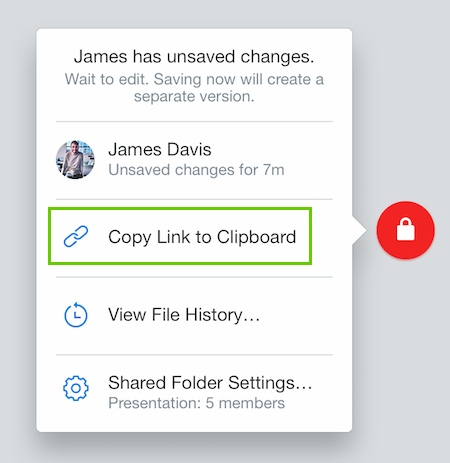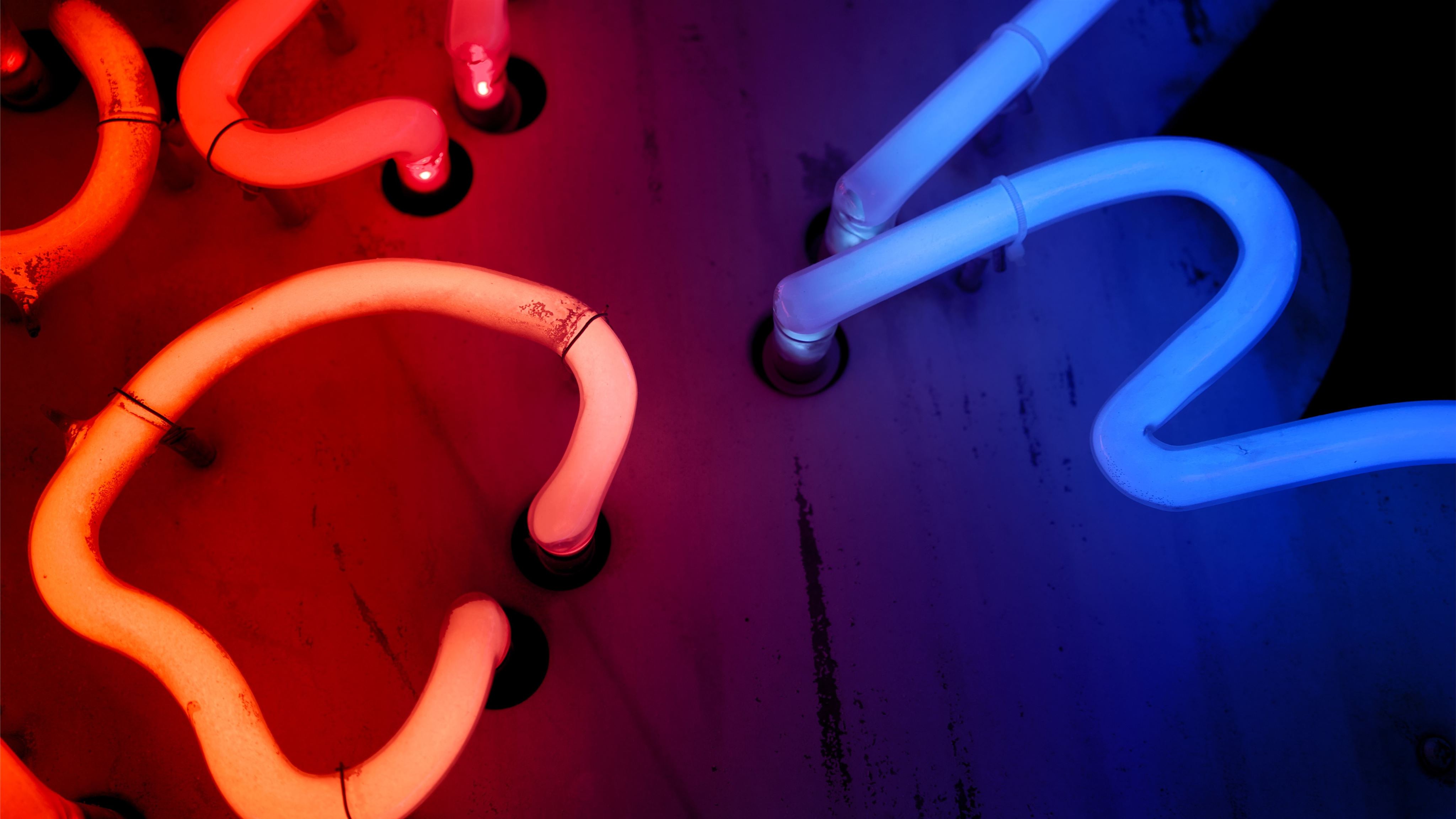First, you can click the link, wait for your web browser to start loading the file, click in the location bar, hold down the Option key, and then press Return. The file will download. Dropbox automatically creates a Favorites shortcut in the sidebar of your Finder window, so you can drag and drop files on your Mac. Open Finder from your Mac's dock. Click on Dropbox in the sidebar. 58 If you have a file on a remote Mac that you need to access from your iOS device, use SSH or a VNC app like LogMeIn to connect to the Mac and then copy the file to your Dropbox folder; when you.
- Link Dropbox To My Pc
- Link Dropbox To A Computer
- How To Create Dropbox Link
- Link Dropbox To Email
- How To Link Dropbox To Mac
Dorkometer: 6/10. Originally published Sep 29, 2013. Updated Feb 19, 2020.
So Dropbox has changed everything and no longer supports symlinks to external folders. That was the silver lining on the dark cloud of their baffling lack of support for internal symlinks. Now they turned that cloud inside out! The dark cloud is now the silver lining, and the silver lining is now dark cloud. In other words, the basic useful thing they mysteriously didn’t support now finally works as we wished it would for so many years… but our consolation prize disappeared at the same time. In still more words (because there’s exactly nothing “intuitive” about any of this)…
The two features
- Internal symlinks — Symlinks in Dropbox to files/folders inside Dropbox.
- External symlinks — Symlinks in Dropbox to files/folders outside Dropbox.
From early Dropbox to mid-2019:
- Internal symlinks — Janky! Symlinks were not preserved. Instead, Dropbox would try to resolve the symlink, replace it with whatever it was linked to… with some very unpredictable results, including data loss. Many people got burned by this, and their frustration made this article popular for many years.
- External symlinks — Functional and useful, but they also never actually supported it. It was an unofficial “hey, weird, that works!”
Since mid-2019…

- Internal symlinks — Supported! “It just works.” Finally!
- External symlinks — Just gone. Poof.
The use case for external symlinking was that it was really nice to symlink to the macOS ~/Sites folder. That way you could have your webdev projects in Sites, as is only natural and right, but the files could still be synced as if they were still in Dropbox. It worked that way for a good decade.
Fortunately, it is possible to do exactly the same thing another way. Apache can be told to use any folder, anywhere. Just set your Document Root like so:
DocumentRoot '/Users/you/Dropbox/Sites'
The rest of the page is the original post, preserved for posterity, so we can look back on the weird old days when a symlink in Dropbox was like a turd in an elevator.
“Dear Dropbox,” a frustrated user wrote to Dropbox long ago, “STOP DESTROYING MY SYMBOLIC LINKS.” What does this mean? Dropbox’s handling of symlinks is fantastic feature for one common purpose … but a janky, data-wrecking horror show otherwise. And has been for many years now. And it’s not easy to explain…
Link Dropbox To My Pc
Handy: Symlinks to folders outside Dropbox
Dropbox resolves symbolic links (symlinks, soft link) by default. On Dropbox servers, symlinks are completely replaced by the data they point to, so that you have the actual data in the cloud — not just a pointer to it.
This works great for syncing folders outside your Dropbox! It is an obscure feature-not-a-bug. For instance, you can put a link to your Documents folder in your Dropbox, and it will follow the link and sync the contents of your Documents folder like a boss. On your synced computers, the symlink continues to look and act like a symlink file in Dropbox (on a Mac, for instance, it looks like an “alias”). But in the cloud, the wholes Docs folder shows up in place of the symlink.
This is organizationally super handy if you want to sync a non-Dropbox folder. Sometimes you don’t want to move a folder into Dropbox just because you’d rather have it somewhere else, or it has to be somewhere else. 1
Link Dropbox To A Computer
Janky: Symlinks to folders inside Dropbox
Things get weird (and bad) if you create a symlink in your Dropbox to data in your Dropbox — “internal” symlinks — and you don’t want those symlinks to resolve. That is, if you need your symlinks to be symlinks, and not just dumb copies of the data they point to. This has been the case for many years now, and probably always will.

Internal symlinks might seem to work out at first, depending on how you are set up: you might see a symlink on both device A and B, as you hope.
But Dropbox does not support your intent, and sooner or later it’s going to replace your symlink with a copy of the file or folder it points to, which is pure pain. The problem is clear: on Dropbox servers, up there in the cloud, there never was any symlink to begin with. Dropbox simply doesn’t sync pointers-as-pointers.
Inconsistent but inevitable
The destruction of symlinks by Dropbox has been surprisingly inconsistent for me. Python download on mac. I have internal symlinks that seem to sync just fine for quite a while. And then I have others that clearly get replaced by copies of the data they point to.2
But symlink destruction is inevitable, and it will happen silently. Even if you think you’ve got it licked for a while, you’re going to wake up one day and realize that a critical symlink has been replaced by duplicate data … which is also hopelessly out of sync.

So what to do? What if you absolutely, positively have to sync a symlink “as is”?
How To Create Dropbox Link

Don’t use Dropbox. There may be other services that will handle symlinks differently and better for many common needs.
Many awesome Dropbox use cases have died for lack of this feature
Should Dropbox fix this? Can they? As of fall 2013, there was a feature request (now defunct, though you can still find references to it) with ~2700 votes and 62 comments. My comment was, “Many awesome Dropbox use cases have died for lack of this feature.” In 2012, Andrew wrote:
Dear Dropbox,
STOP DESTROYING MY SYMBOLIC LINKS.
With love,Software Developers
The explanation for the situation is fairly clear, though: because the way things work right now supports linking to external folders, which is an extremely handy power-user feature. Which relies on resolving symlinks! I assume the trick isn’t so much getting Dropbox to sync links as-is, but doing so without sacrificing the external linking option.
The only general solution I can imagine would be an (advanced!) per-item setting … which is not exactly Dropbox’s style. Symlinks can be be a bit of a mindfuck on their own; imagine how confusing things could get if some symlinks as are synced as-is, while selected others resolve, and the only way to tell was the state of a switch in the cloud … or data loss if you get it wrong! Eep.
Why, Dropbox, why?
Google hangouts chat mac. I found this explanation quoted by Aurelio Jargas in 2012:
Unfortunately this is a design decision that we made a very long time ago. There is no notion of symlinks in the Dropbox system (Windows XP didn't support symlinks) so our solution was to sync all the data within symlinks as if they were actual folders anyway. — Rian H., Dropbox employee
In addition to the fact that resolving symlinks has a major side benefit, that’s probably the main, original reason for the design. Thanks a bunch, Windows XP! Still fucking with us, for 17 years and counting…
For instance, this method it’s critical for a folder like the Sites folder on a Mac, which has to be in a specific location to work. If you want to sync a Sites folder with Dropbox, you have no choice: you have to link to it, and Dropbox must resolve the link. Hp 7740 driver mac. Which it does. ↩
In one case, in a 4-Mac scenario, two of them have synced healthy, functioning symlinks … and two have destructively replaced them with copies of the linked folders. I have some ideas what the difference is, but ultimately the details aren’t really important unless there’s some symlinks-as-symlinks configuration that actually works, which there probably isn’t. I haven’t found and no one has reported to me in the many years this article has been getting a fair bit of traffic. ↩
Personal security when linking to a team account
Link Dropbox To Email
Linking accounts doesn’t transfer or share any information between the two accounts. It only makes it easier for you to switch between them. When you link a personal and team account, it doesn’t allow anyone on your team, including your admin, to access your personal Dropbox account through Dropbox, even if they use the“sign in as a team member” feature.
Link your accounts on dropbox.com
How To Link Dropbox To Mac
- Sign in to dropbox.com with either account.
- Click your avatar (profile picture or initials).
- Click Settings.
- In the General tab, under Link your team account or Link your personal account, click Link accounts.
Link your accounts in the desktop app
- Open the Dropbox desktop app and sign in to one of the accounts you’d like to link.
- Click the Account tab.
- Click Link personal account or Link team account.
- If you don’t see this option, your admin could have disabled it.
Link your accounts in the mobile app
- Open the Dropbox mobile app and sign in to one of the accounts you’d like to link.
- Tap the menu icon (Android) or the gear icon (iPhone/iPad).
- Tap Settings.
- Tap + Add team/personal account.
Unlink your accounts
You can only unlink your accounts on dropbox.com. Unlinking your accounts unlinks them everywhere. Across all devices and apps, you’ll be signed out of the last account you added to that app and stay signed in to the first account.
You can always sign back into your accounts on any device, as you normally would with any unlinked account.
To unlink your accounts:
- Sign in to dropbox.com with one of the accounts you’d like to unlink.
- Click your avatar (profile picture or initials).
- In the General tab, under Linked accounts, click Unlink.
- Click Yes, unlink to confirm.
